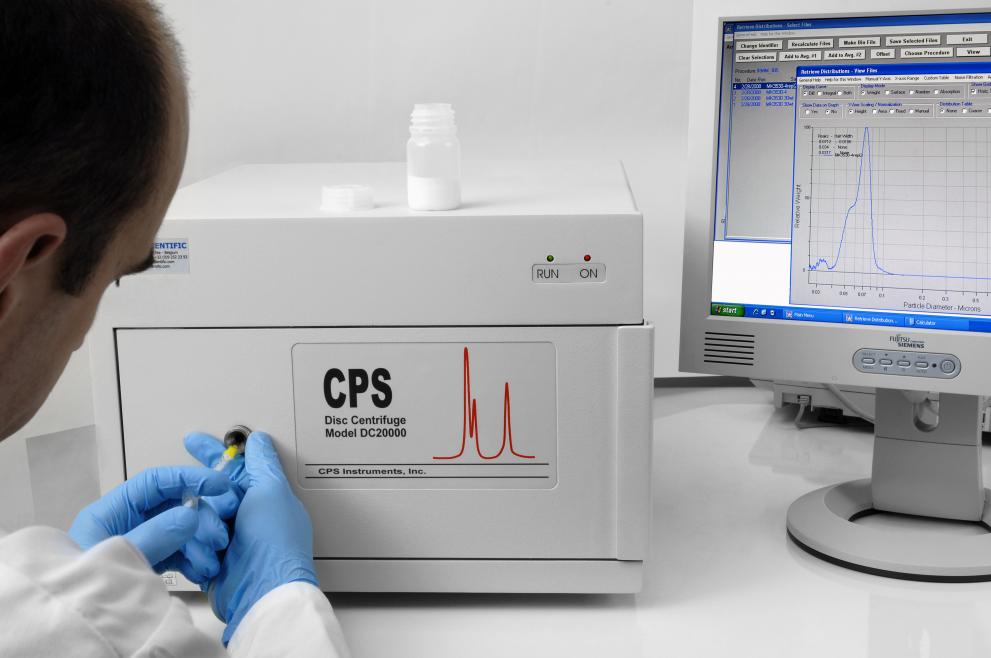
A collaborative study, organised by JRC, investigated the comparability and reliability of particle size values measured by a commercial centrifugal liquid sedimentation technique. The study was carried out to support the implementation of legislation related to nanomaterials.
The outcome of the study shows that particle size results are comparable when the method is calibrated with a well-characterised, good quality calibrant and that results can be achieved with an accuracy of about 10 %.
Achieving accurate particle size results is critical for many industrial and research applications. For nanoparticles, size has become even more important with the adoption of the EC Recommendation ‘on the definition of a nanomaterial’ (2011/696/EU). A variety of techniques such as electron microscopy, dynamic light scattering, particle tracking analysis, scanning probe microscopy and disc centrifugal liquid sedimentation (disc-CLS) are available for particle characterisation. While each of these techniques has specific advantages and disadvantages, disc-CLS is increasingly used because of its high power to discriminate individual particles from particle agglomerates.
The disc-CLS method is based on the principles of Stokes' law. In theory, the method can be used without calibration. However, this approach is complicated by the fact that different critical method parameters cannot be assessed reliably. Therefore, most users of disc-CLS instruments calibrate the measurement signal with monodisperse spherical polyvinyl chloride (PVC) reference particles of known size and density.
These reference particles, which are supplied by one of the main manufacturers of disc-CLS instruments, are nowadays almost exclusively used for the calibration of disc-CLS instruments.
The use of PVC reference particles significantly simplifies the disc-CLS measurement procedure. However, to ensure the reliability of the obtained particle size results, one must demonstrate that the calibration materials are of sufficient quality. In order to investigate the reliability of this calibration method, a collaborative study was organised by JRC. During this study, the particle size and particle density of different PVC calibration materials were examined meticulously using different validated methods. The obtained results indicated a good agreement between the experimental results and the values provided by the supplier of the PVC materials. For example, the modal diameter and particle density agreed with the values assigned by the supplier within 5 % and 3.5 %, respectively.
The results of our study demonstrate, for the first time, that particle size results obtained with disc-CLS can be reliable and that results can be accurate within 10 %, provided that the method is correctly calibrated using PVC reference particles.
Read more in: V. Kestens et al., "Improved metrological traceability of particle size values measured with line-start incremental centrifugal liquid sedimentation", Langmuir 33 (2017) 8213-8224, doi: 10.1021/acs.langmuir.7b01714
Related Content
Details
- Publication date
- 24 October 2017
